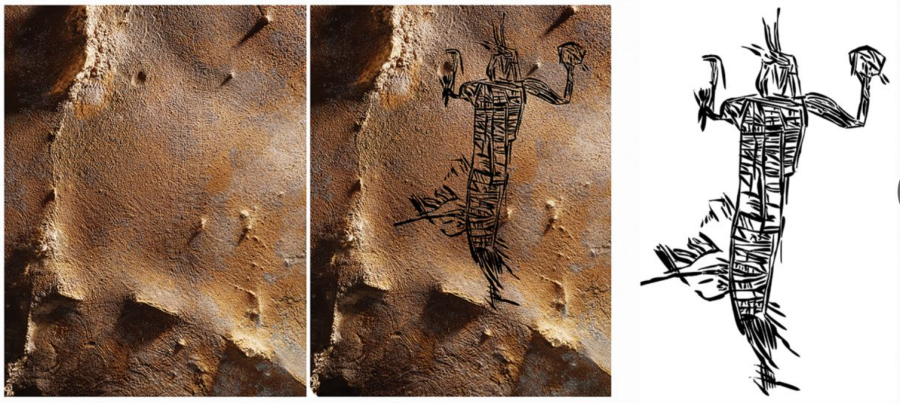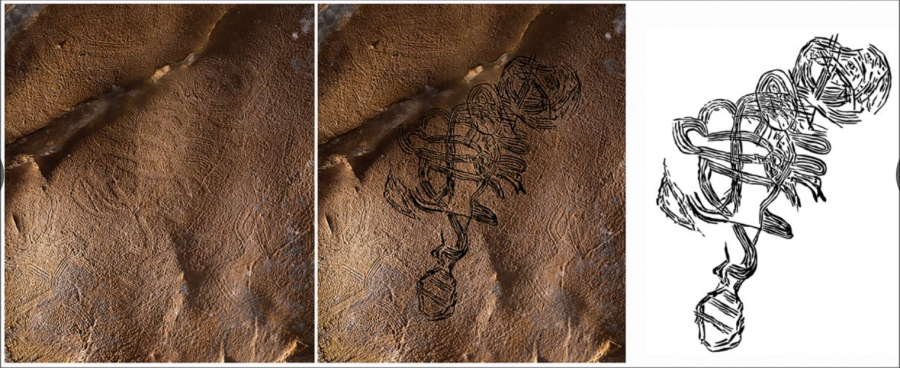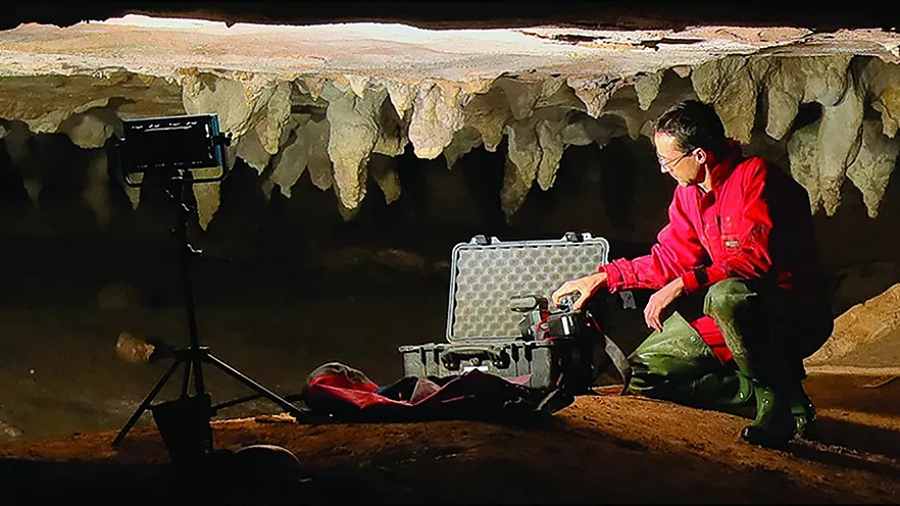![]() American photojournalist and founder of the Ancient Art Archive Stephen Alvarez in the 19th newly identified but unnamed cave in Alabama.
American photojournalist and founder of the Ancient Art Archive Stephen Alvarez in the 19th newly identified but unnamed cave in Alabama.
Wed 04 May 2022:
According to a new study, archaeologists in Alabama have unearthed the oldest known painting painted by early Indigenous Americans. The experts believe that indigenous Americans created this 1,000-year-old record-breaking image — of a 10-foot-long (3-meter) rattlesnake — as well as other drawings out of mud on the cave’s walls and ceiling, perhaps to symbolize spirits of the underworld.
This image and other paintings were crafted by indigenous Americans from mud on the walls and ceiling of a cave. It also depicts spirits of the underworld, the researchers said.




This cave has hundreds of such paintings. It is highly likely to be considered as the richest place for Native American cave art in American Southeast, the researchers said.
In the journal ‘Antiquity’, the study will be published on Wednesday (May 4).
The team used photogrammetry to investigate this art. This technique involves taking many images digitally to build a virtual 3D model. With the help of this method, the researchers spotted five earlier unknown giant cave paintings, which are known as glyphs.
“This methodology allows us to create a virtual model of the space that we can manipulate. In this particular case, the ceiling of the cave is very close to the floor. So, your field of vision is limited by your proximity to the ceiling. We never saw these very large images because we couldn’t get back far enough to see them,” study’s author Jan Simek, professor, Department of Anthropology, University of Tennessee, told Live Science.
After creating the virtual model, “we could look at it from a greater perspective. It allows us to see things in a way that we can’t in person,” Simek added.
“These are special because until now, we have had no large figures from this area,” Simek said “And so that changes our perspective on what might be in these caves.” For instance, there are similarly large rock art images made by Indigenous peoples in the western United States, although these glyphs are not found in caves, he said. “It brings the cave art of the southeast into the discussion of other monumental images that we see in different parts of North America,” Simek noted.
This cave was discovered in 1998 and is still unnamed, with the label “19th unnamed cave” being used to safeguard the finds. According to a 1999 research published in the journal Southeastern Archaeology, the cave comprises nearly 3 miles (5 kilometers) of underground corridors, with the majority of murals uncovered in one enormous chamber.
The team intends to increase knowledge of Indigenous American art by continuing to utilize photogrammetry techniques on the 19th nameless cave and others.
SOURCE: INDEPENDENT PRESS AND NEWS AGENCIES
___________________________________________________________________________________________________________________________________________
FOLLOW INDEPENDENT PRESS:
TWITTER (CLICK HERE)
https://twitter.com/IpIndependent
FACEBOOK (CLICK HERE)
https://web.facebook.com/ipindependent
Think your friends would be interested? Share this story!





